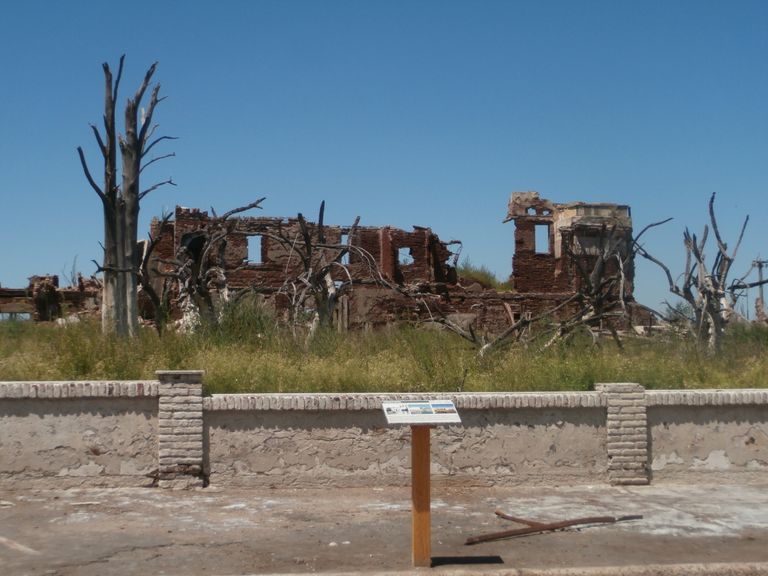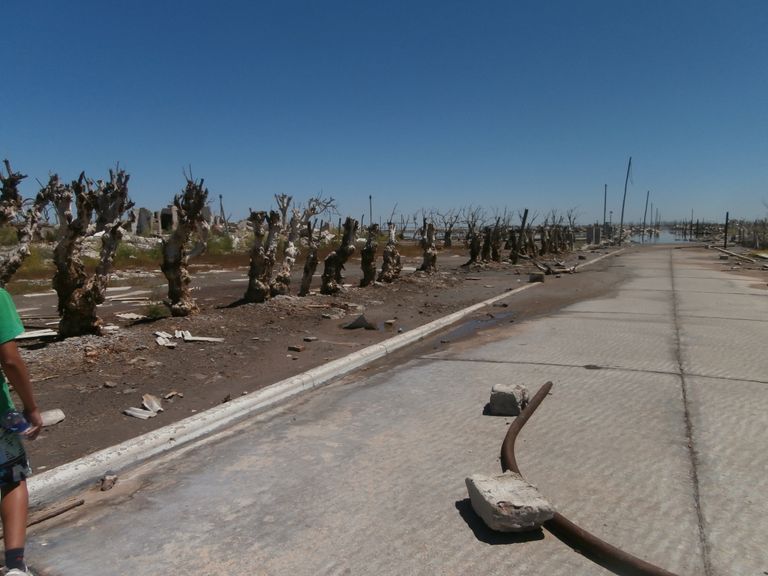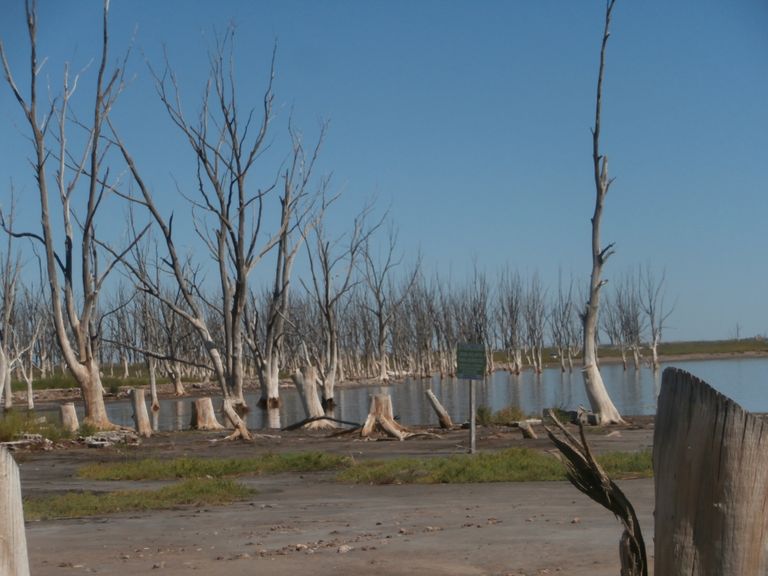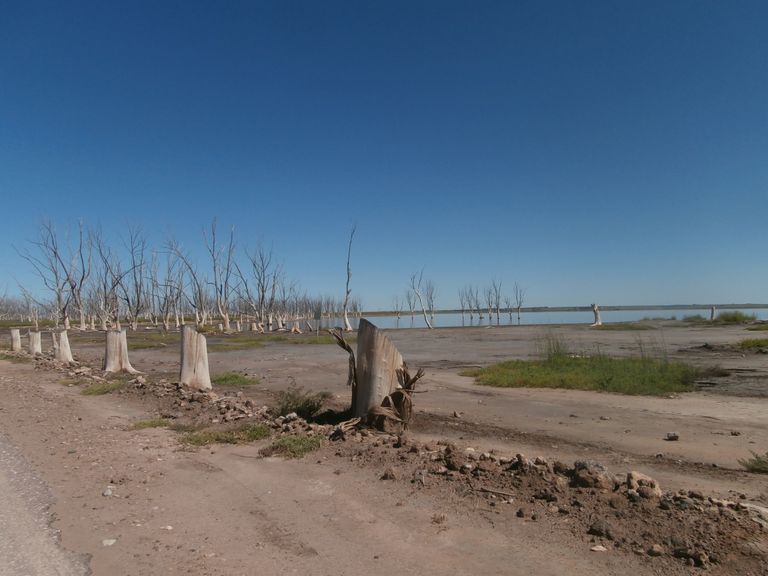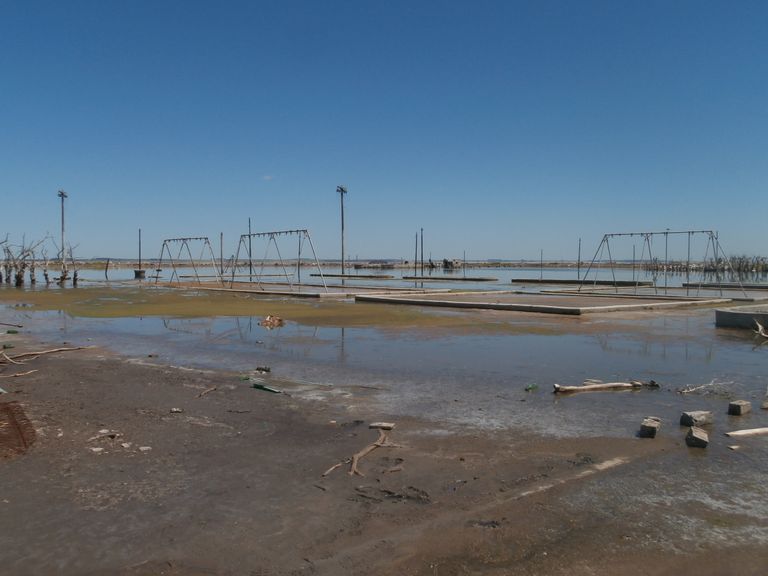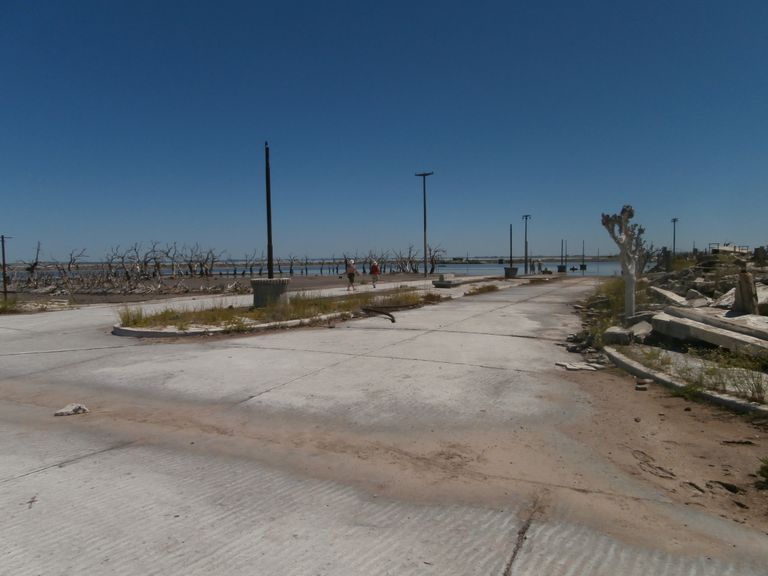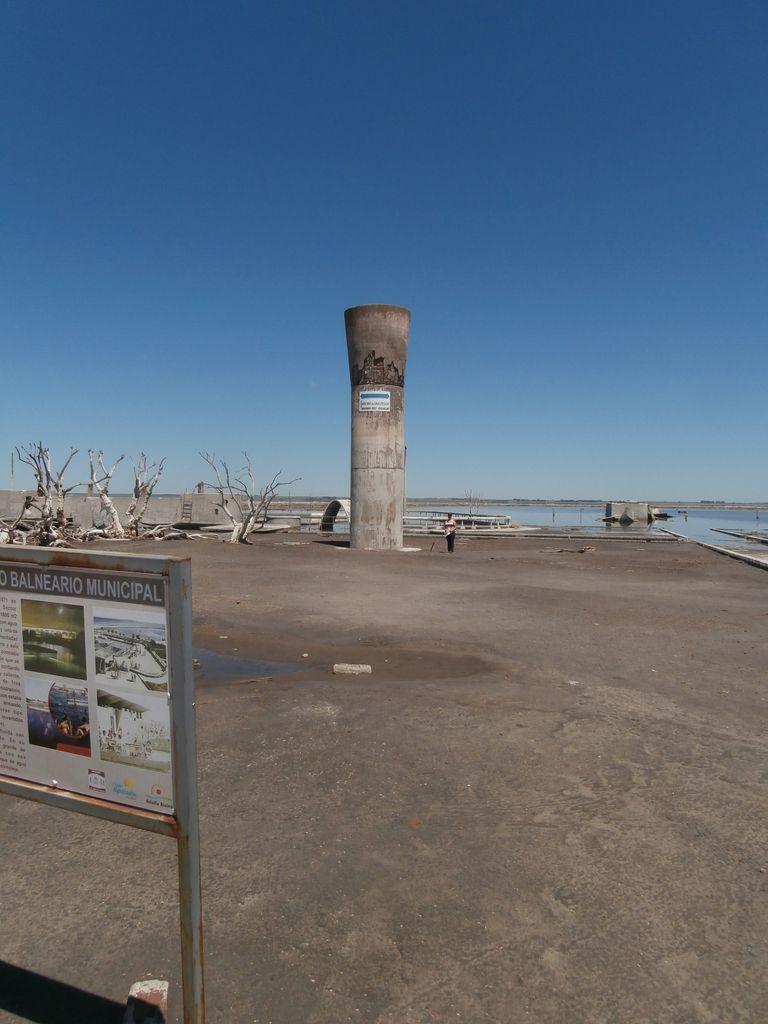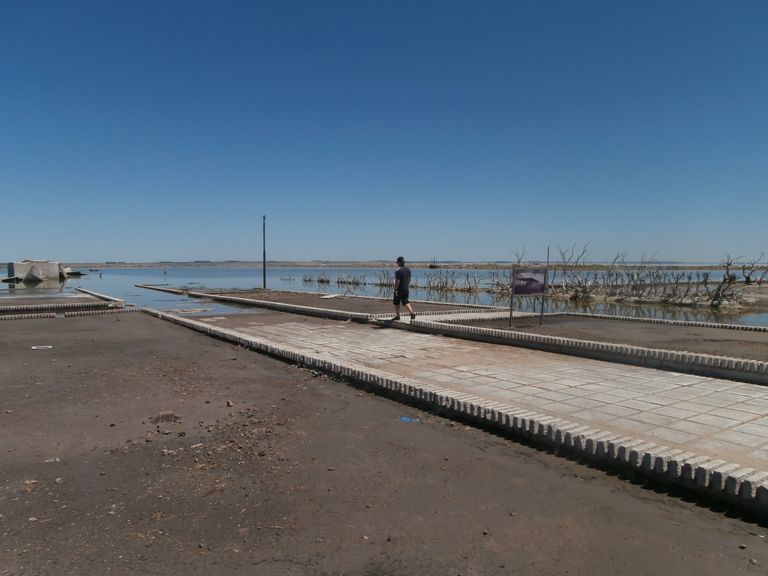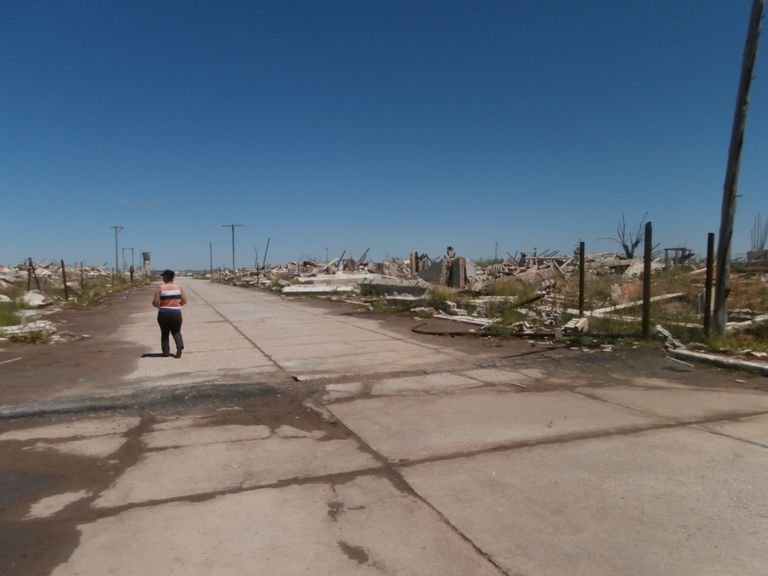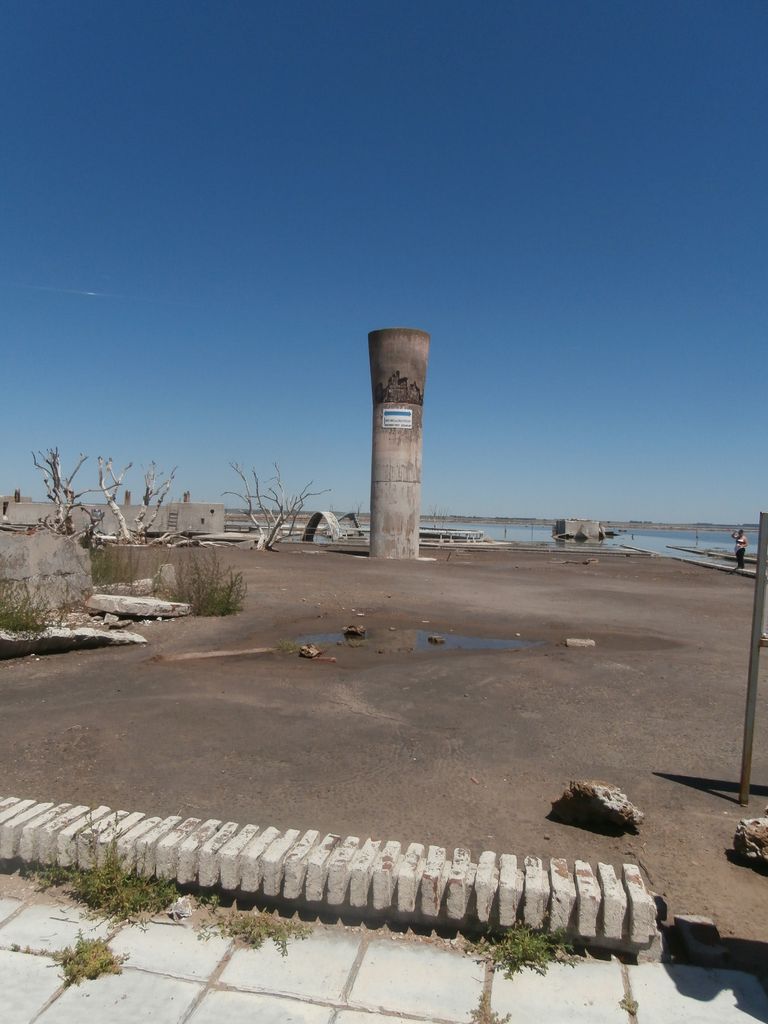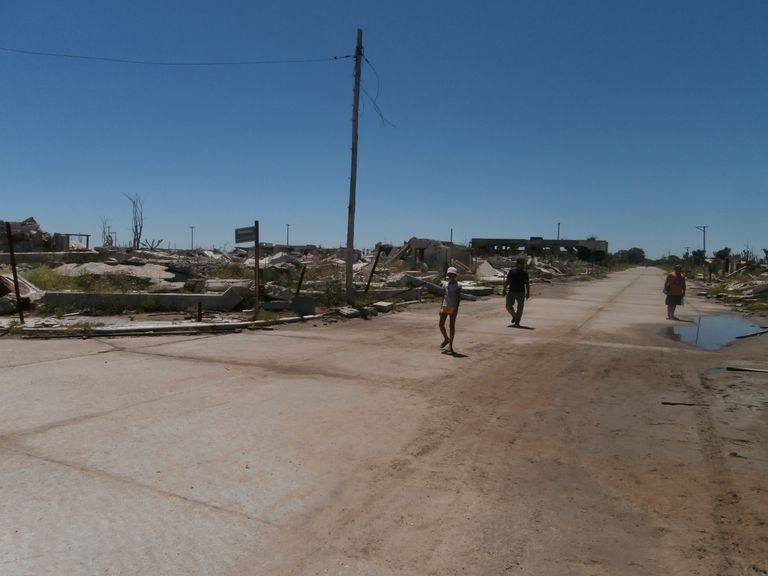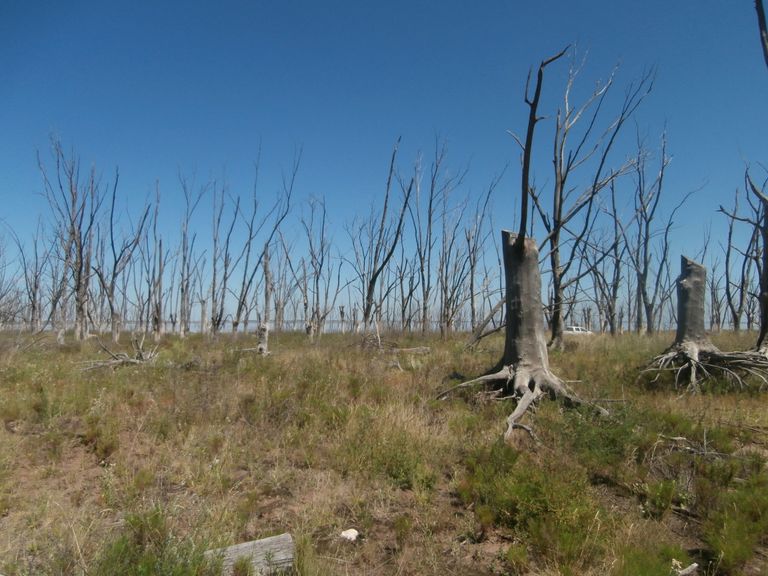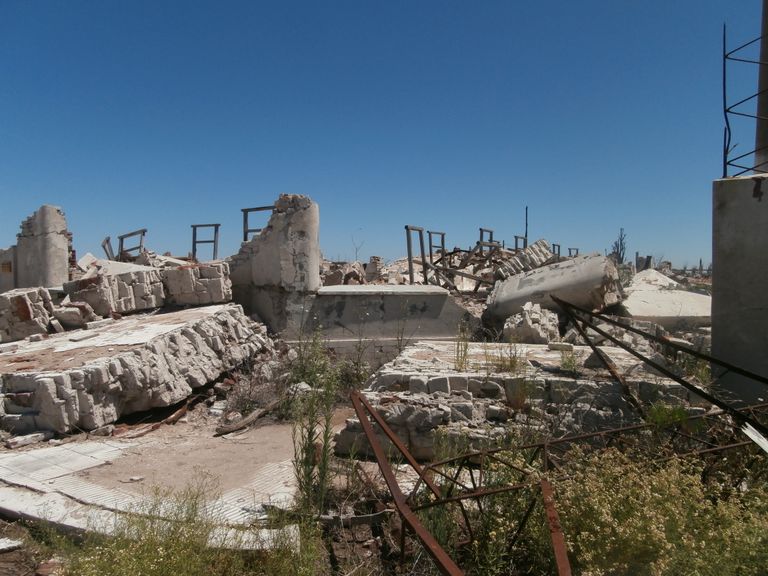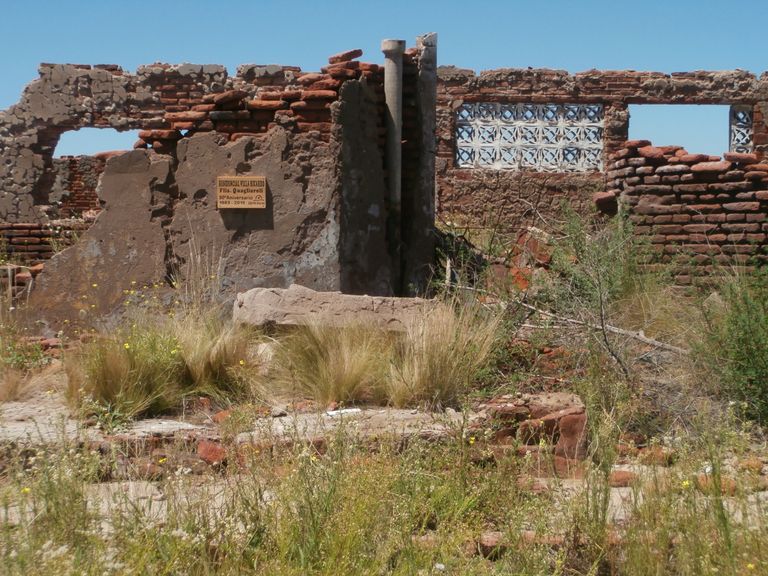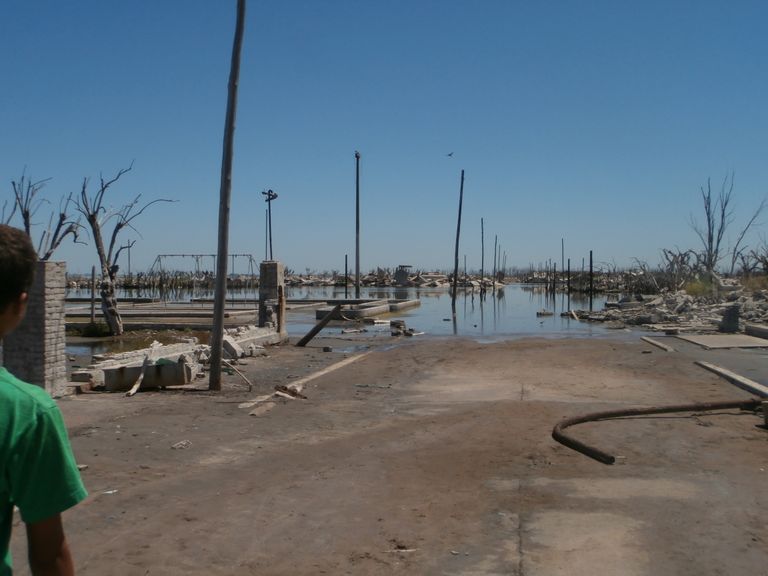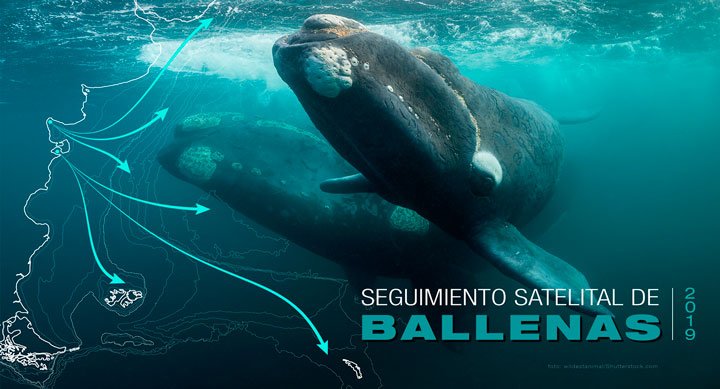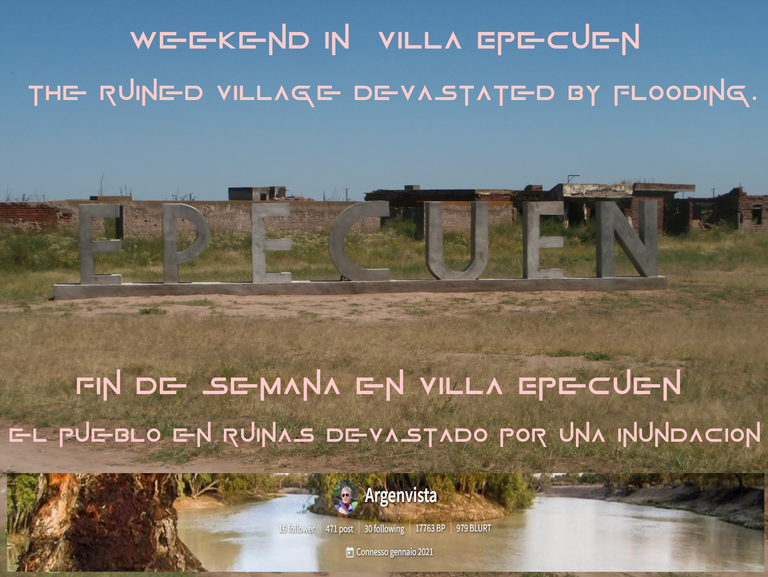 /center>
/center>
I had long wanted to visit Villa Epecuén, the ruins of the former popular tourist village in the west of Buenos Aires province in Argentina that met a tragic end succumbing to the rain on 10 November 1985 when the embankment gave way and the water completely covered the village.
A powerful southeast storm in the days following the heavy rains completed the work of destruction.
An immense flood destroyed the dream of so many tourists who took advantage of the immense natural fresh water pools to spend their holidays....
Today only ruins of that past splendour remain.
It had been inaugurated in 1821 when tourism was beginning to become popular in Argentina and, at the beginning, it was the favourite destination of wealthy families. Then, little by little, families of modest means also began to join in.
At the beginning of the 20th century, the arrival of the railway gave it an even greater boost. It was its golden age. Trains full of tourists had an obligatory stop in Villa Epecuén, where hundreds of tourists got off.
In its heyday it was said that its waters had healing powers, although in fact the lagoon that had these properties was the neighbouring lagoon of Carhué, with a high salt content that favoured the cure of bone and rheumatic diseases.
It actually took several years for the mud from the lagoon to be recognised by the World Health Organisation (WHO) for its curative properties.
It had everything: family hotels and luxury hotels, restaurants for all budgets. With just 1,200 inhabitants, it was one of the main tourist centres in the region, with between 25,000 and 30,000 tourists arriving each summer season.
Remarkable numbers for the time, I am talking about the 1960s-1970s. It had 6,000 hotel beds (five times more than its inhabitants) and around 300 commercial exercises.
It even came to compete with the popular Mar del Plata, albeit on a smaller scale, and for less well-off families who could not spend too much money on holidays.
Practically at a time when business opening hours followed the traditional schedule, Epecuén kept all its shops open 24 hours a day.
In winter, of course, it was completely empty. It was only summer tourism. Some people, in boats, would go away from the shores of the lagoon and spend the day fishing.
There were always fears of flooding, as the village was almost at the same level as the lagoon. For this reason, waterworks to drain the lagoon were indispensable.
However, the military coup d'état in 1976 and the dictatorship that followed made it impossible to carry out the project. Those were hard years for Argentina in which the military junta was only concerned with repressing thoughts contrary to its ideology.
At the beginning of 1985 it rained in a few months the same amount as it normally rained in a year. The water gradually accumulated and the level of the lagoon began to rise. But what gave it the coup de grâce was the Sudestada of 10 November (a meteorological phenomenon characterised by intense rain with strong winds and waves that especially affects the Rio de la Plata).
In a few hours the town was completely flooded and the general evacuation of the population began. Everyone took what they could.
The embankment gave way and the water began to enter the village, slowly and inexorably. The inhabitants began to cover doors and cracks where the water could pass through with sandbags, but the water was advancing. Within hours the hotels were covered with a metre of water.
The underground water table in the lagoon broke and water began to seep to the surface. Despite the fact that there was no more rain, the water began to rise at a rate of one centimetre per hour.
People living in the higher parts of the village returned to their homes in the hope of getting back on their feet. But the water continued to advance, slowly and inexorably. Until it was time for them too to leave.
In less than a month, Villa Epecuén was transformed from a flourishing and lively tourist centre into a devastated place, a ghost town.
The glorious years of Villa Epecuén had been, after a few months, submerged under seven metres of water.
Twenty years after that tragic 1985, the water gradually began to recede and the former residents who had settled in Carhué and other neighbouring towns wanted to return, only to find a devastating, surreal landscape.
Their eyes could not get used to that tide of memories, of vestiges of a splendid past and of projects that could not be.
